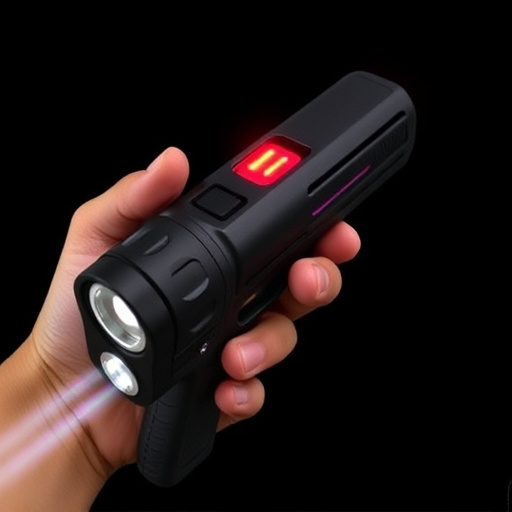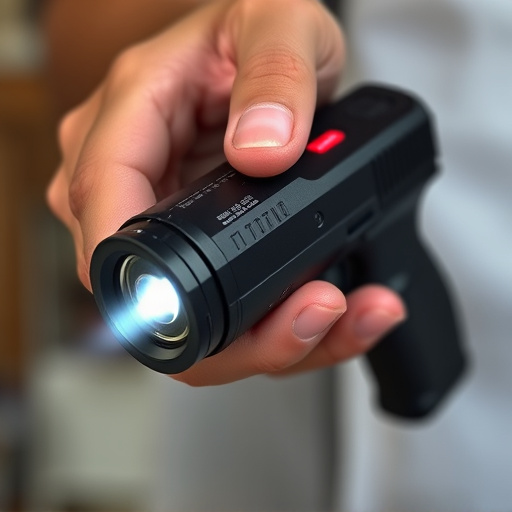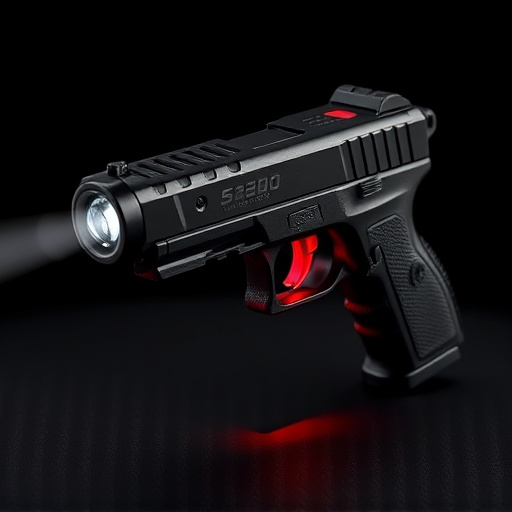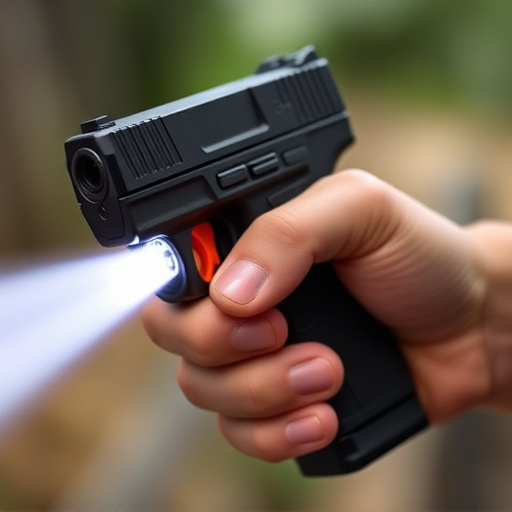The duration of paralysis from a slider stun gun varies (2-15 seconds) based on device model, user characteristics, target location, environmental conditions, and individual sensitivity. Effective use requires thorough training for professionals who balance threat neutralization with minimizing side effects, adhering to best practices, and prioritizing public safety.
“Discover the critical factor of time in stun gun deployments, specifically focusing on paralysis duration. This article offers a comprehensive overview of understanding how long individuals remain paralyzed after a taser strike. We explore various factors that influence this period, from physical attributes to environmental conditions.
Furthermore, it delves into best practices and safety measures to ensure responsible taser deployment, emphasizing the importance of every second in potentially life-altering situations. For detailed insights, read on about the slider stun gun’s impact.”
- Understanding Paralysis Duration: A Comprehensive Overview
- Factors Influencing Stun Gun Paralysis Time
- Best Practices and Safety Measures for Taser Deployment
Understanding Paralysis Duration: A Comprehensive Overview

Paralysis duration from Taser deployment is a critical aspect that requires comprehensive understanding, especially in law enforcement and self-defense scenarios where a slider stun gun is used. The effects of a Taser, or stun gun, can vary significantly depending on several factors, including the model of the device, the number of probes deployed, and the physical characteristics of the target. Research indicates that the average paralysis duration from a Taser strike typically lasts between 2 to 5 seconds. However, in some cases, it can extend up to 15 seconds or more.
This variability necessitates careful consideration during training and deployment. Law enforcement agencies and individuals trained in using stun guns are taught to assess the situation and use the minimum force required to neutralize a threat effectively while minimizing potential side effects. Understanding paralysis duration is essential for ensuring public safety and adhering to legal standards, as excessive or inappropriate use can lead to adverse consequences.
Factors Influencing Stun Gun Paralysis Time

The duration of paralysis caused by a slider stun gun can vary greatly, influenced by several key factors. One primary determinant is the power output of the device—higher voltage and current generally result in longer periods of immobilization. The user’s body type and physical condition also play a role; larger individuals may experience shorter durations due to higher muscle mass and nerve density.
Additionally, the location of the stun gun discharge matters. Targeting nerve clusters or muscle groups can significantly prolong paralysis. Environmental conditions, such as temperature and humidity, can impact the device’s performance and the subject’s ability to recover. Finally, individual sensitivity to electrical shocks varies, with some individuals being more prone to prolonged paralysis than others.
Best Practices and Safety Measures for Taser Deployment

When employing a slider stun gun, adhering to best practices and safety measures is paramount to minimize risks and ensure effective deployment. These devices should only be used as a last resort by properly trained individuals when facing an imminent threat. Officers are required to assess the situation, communicate their intentions clearly, and exhaust all other de-escalation techniques before employing such force. The primary goal is to incapacitate the subject temporarily while ensuring public safety.
Training programs must emphasize the importance of accurate targeting, as aiming for specific nerve points can significantly reduce the impact on bystanders. Additionally, regular maintenance and calibration of equipment are crucial to guarantee reliable operation. Officers should be equipped with knowledge about the weapon’s range, discharge patterns, and aftereffects, enabling them to make informed decisions in high-pressure situations.
The duration of paralysis after a slider stun gun deployment varies based on numerous factors. Understanding these influences is crucial for ensuring safe and effective use. By adhering to best practices and safety measures, including proper training and equipment maintenance, the risk of prolonged immobilization can be minimized. Awareness of individual differences and continuous evaluation of response times are key to responsible taser usage, ultimately facilitating a quicker resolution to potentially dangerous situations.
